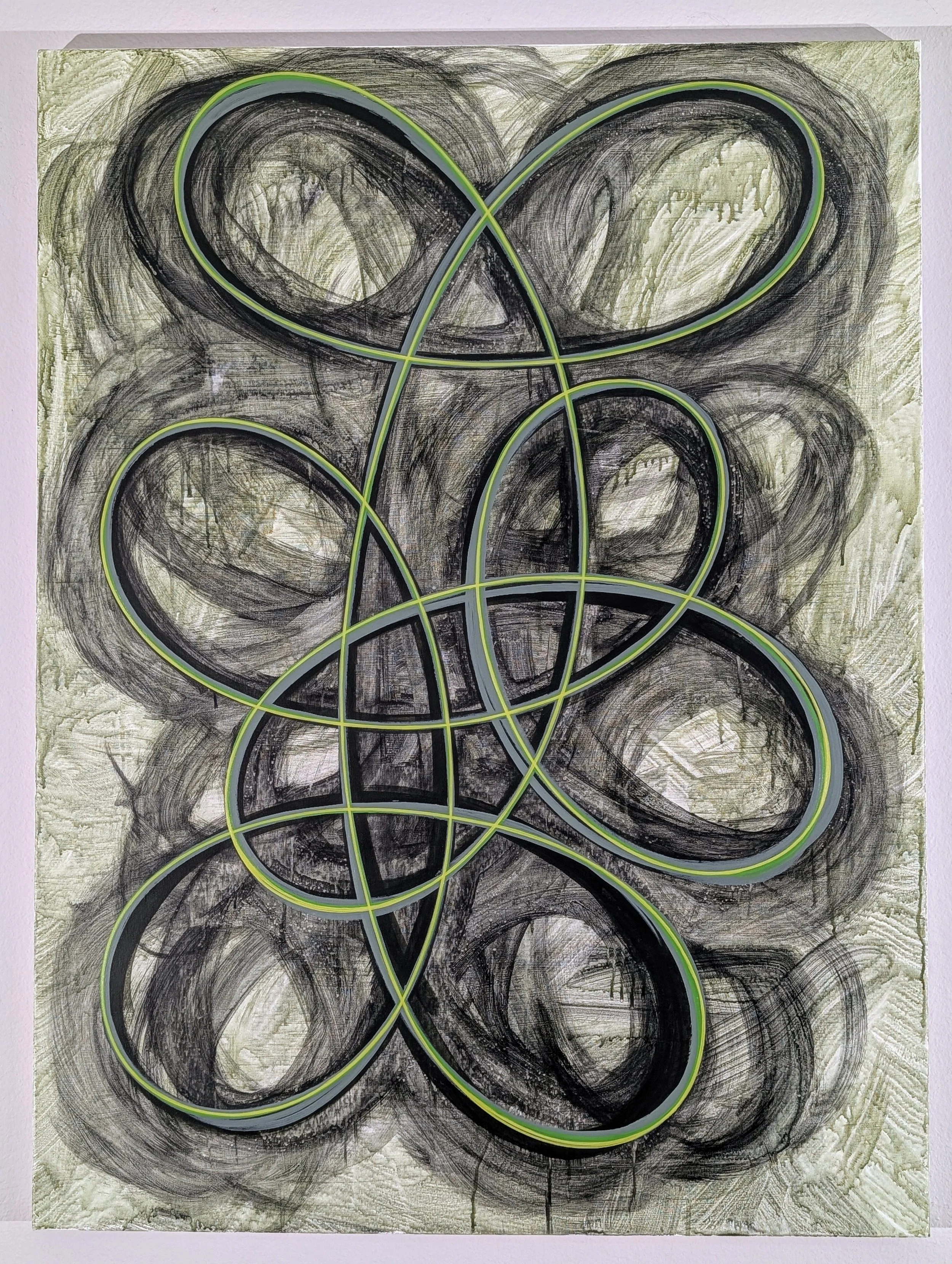Walk the drain’s perimeter
48”x36” acrylic on canvas $987
send inquiries to russ@russbaileystudio.com
The most fun I remember having as a kid, other than drawing, was in unstructured play with my brothers and a couple of close friends. We would realize we were bored and move into the next thing by doing some first-come first-served, “Hey! I know. Let’s try this!” until we all agreed, or a single holdout at least gave in. Then we’d act out a bank robbery, or race bikes, or record ourselves doing goofy voices, or whatever.
We’d throw ourselves into that whatever, but with increasingly frequent immersion breaks to address matters of fairness or revisit what was allowed or not allowed. Many times, we’d stop doing the whatever altogether and just lose ourselves in declaring, contesting, and revising the rules. In some ways, that was where the actual fun was. The real frisson of unstructured play was the spontaneous rulemaking, along with navigating the power dynamics of taking sides.
Contemporary art can be a place where anything is possible and everything is permissible, with the consequence that nothing means much. We focus a lot on the aspect of creativity that involves novelty, or relevance, but those can only be determined from context. Given proper context, there is no noise. Without it, no signal. Rules can provide a shared context. Honestly, I can’t think of much else that can. But let them be neither too rigid, nor too abundant. Because it’s all fun and games until somebody gets hurt.



